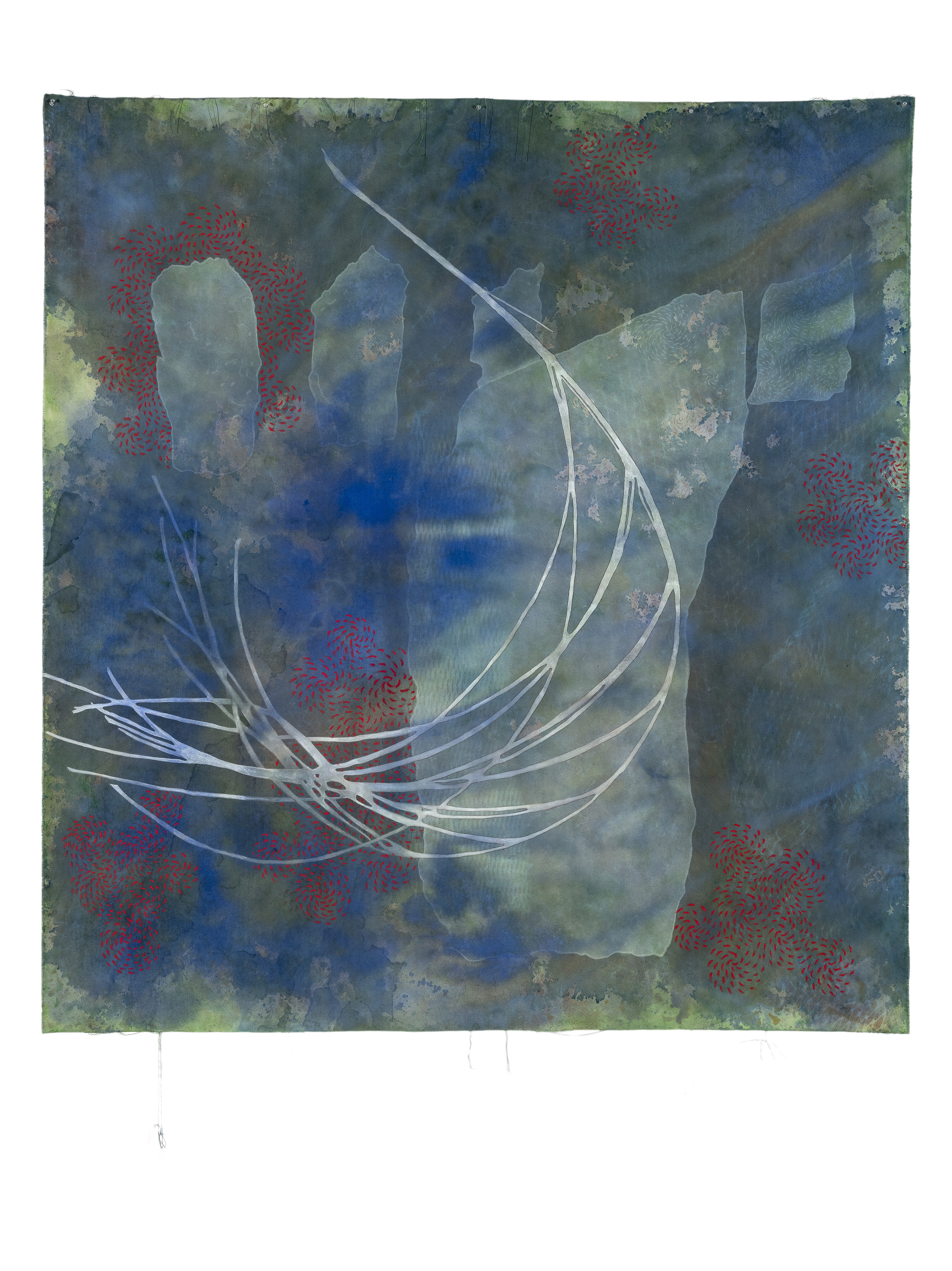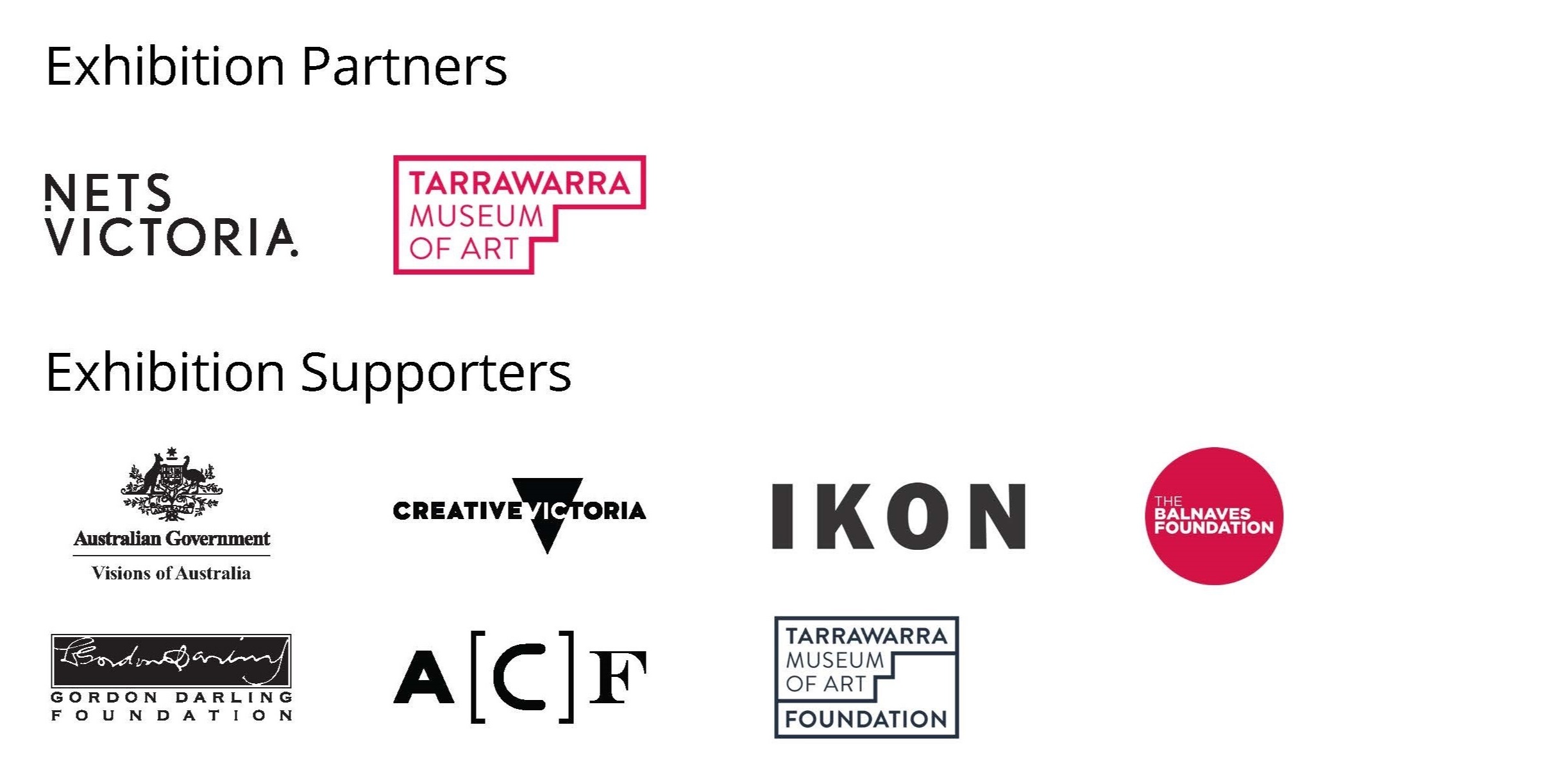Summary |
An exploration of the changing understandings of life by 26 contemporary artists. |
|---|---|
Start Date |
Aug 20, 2022 11:00 am |
End Date |
Aug 20, 2022 12:30 pm |
Venue |
Plimsoll Gallery |

Image credit: Judy Watson, spot fires, our country is burning now, 2020, synthetic polymer, pastel, graphite on canvas 194 x 181 cm, Courtesy of the artist and Milani Gallery, Brisbane. Photo: Carl Warner
In conversation with Judy Watson and Yhonnie Scarce
Join artists Judy Watson and Yhonnie Scarce of ’Looking Glass‘ with special guest speaker Dr Julie Gough, in conversation with Dr Jan Hogan, as they delve into the exhibition and its development, touching on the artist’s motivations behind the work.
Saturday 20 August 2022
11am - 12:30pm
Dechaineux Theatre
School of Creative Arts and Media
37 Hunter Street, Hobart
RSVP: galleries@utas.edu.au
The discussion will expand on themes of ‘Looking Glass’ including Australia’s colonial violence, the little-known history of nuclear testing in this country, its continuing health effects on people and Country, and the ongoing climate emergency.
Join us as the artists delve into their practice as it sings out loss and resilience in ‘Looking Glass’.
ABOUT THE SPEAKERS
JUDY WATSON
Judy Watson was born in Mundubbera, Queensland and lives and works in Brisbane. Watson’s Aboriginal matrilineal family are Waanyi, whose Country is located in north-west Queensland. Watson works from site, archives and collective memory to reveal the fault lines of history within place and Country, lays bare the impact of colonial history and the institutional discrimination of Aboriginal people, celebrates Aboriginal cultural practice, and registers our precarious relationship with the environment. Her works comprise painting, printmaking, drawing, video, sculpture and public art.
YHONNIE SCARCE
Yhonnie Scarce was born in Woomera, South Australia, and belongs to the Kokatha and Nukunu peoples. Her interdisciplinary practice explores the political nature and aesthetic qualities of glass and photography. Scarce’s work often references the ongoing effects of colonisation on Aboriginal people; in particular her research has explored the impact of the removal and relocation of Aboriginal people from their homelands and the forcible removal of Aboriginal children from their families. Family history is central to Scarce’s work, drawing on the strength of her ancestors, she offers herself as a conduit, sharing their significant stories from the past.
JULIE GOUGH
Julie Gough is an artist, writer and curator who lives in Hobart, Tasmania. She was born in Melbourne, Victoria (Australia) in 1965, and has lived mostly in Tasmania since the end of 1993. Julie’s research and art practice involves uncovering and re-presenting subsumed and often conflicting histories, often referring to her own and her family’s experiences as Tasmanian Aboriginal people. Julie is Trawlwoolway through her maternal family, and her Traditional homeland is Tebrikunna in far north eastern Lutruwita / Tasmania. Julie’s paternal heritage is mostly Scottish and Irish.

This project has been assisted by the Australian Government’s Visions of Australia program, is supported by the Victorian Government through Creative Victoria, as well as receiving development assistance from NETS Victoria’s Exhibition Development Fund 2019, supported by the Victorian Government through Creative Victoria, and by Creative Partnerships Australia through the Australian Cultural Fund.

National Exhibitions Touring Support (NETS) Victoria is supported by the Victorian Government through Creative Victoria, by the Australian Government through the Australia Council, its arts funding and advisory body, and through the Visual Arts and Craft Strategy, an initiative of the Australian, State and Territory Governments. NETS Victoria also receives significant in-kind support from the National Gallery of Victoria.